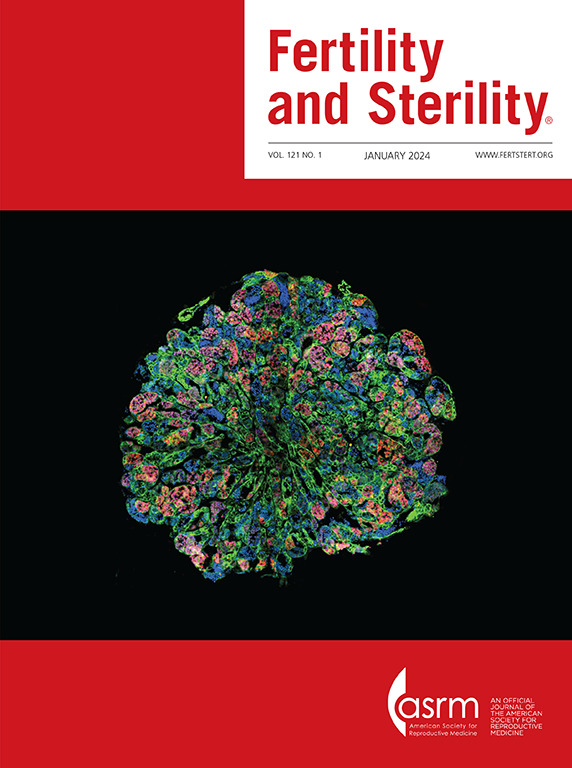Top 10 priorities for future ectopic pregnancy research: an international consensus development study.
IF 7
1区 医学
Q1 OBSTETRICS & GYNECOLOGY
引用次数: 0
Abstract
OBJECTIVE To determine the future priorities for ectopic pregnancy research. DESIGN Potential research questions were collated from an initial international survey, a systematic review of clinical practice guidelines, and Cochrane systematic reviews. A rationalized list of confirmed research uncertainties was prioritized in an interim international survey. Prioritized research uncertainties were discussed during a consensus development meeting. Using a formal consensus development method, the modified nominal group technique, diverse stakeholders identified the top 10 research priorities for future ectopic pregnancy research. SUBJECTS Healthcare professionals, people with lived experience of ectopic pregnancy, and others were brought together in an open and transparent process using formal consensus methods advocated by the James Lind Alliance. EXPOSURE Not applicable MAIN OUTCOME MEASURES: Top 10 research priorities for ectopic pregnancy. RESULTS The initial survey was completed by 855 participants from 35 countries, and 1,220 potential research questions were submitted. 3 clinical practice guidelines and 43 Cochrane systematic reviews identified a further 24 potential research questions. A rationalized list of 49 confirmed research uncertainties was entered into an interim prioritization survey completed by 413 respondents from 20 countries. The top 10 research priorities were identified during a consensus development meeting involving 37 participants from 10 countries. These research priorities are diverse and seek answers to questions regarding prevention, treatment, and the longer-term impact of ectopic pregnancy. CONCLUSION We anticipate that identified research priorities, developed to specifically highlight the most pressing clinical needs as perceived by healthcare professionals, people with lived experience of ectopic pregnancy, and others, will help research funding organizations and researchers to develop their future research agenda.未来异位妊娠研究的十大重点:一项国际共识发展研究。
目的确定未来异位妊娠研究的重点。DESIGNPotential研究问题整理自最初的国际调查、临床实践指南系统综述和Cochrane系统综述。在一项临时国际调查中,确定了一份合理的研究不确定性清单。在协商一致的发展会议上讨论了优先研究的不确定性。利用正式的共识发展方法,改进的名义群体技术,不同的利益相关者确定了未来异位妊娠研究的十大研究重点。医疗保健专业人员,有异位妊娠生活经验的人,和其他人被聚集在一个开放和透明的过程中,使用詹姆斯·林德联盟倡导的正式共识方法。主要结局指标:异位妊娠的十大研究重点。结果来自35个国家的855名参与者完成了初步调查,提交了1220个潜在的研究问题。3份临床实践指南和43篇Cochrane系统综述确定了另外24个潜在的研究问题。来自20个国家的413名受访者完成了一项临时优先级调查,其中列出了49个已确认的研究不确定因素。来自10个国家的37名与会者在协商一致的发展会议上确定了十大研究重点。这些研究的重点是多种多样的,并寻求有关预防,治疗和异位妊娠的长期影响的问题的答案。结论:我们预计,确定的研究重点将有助于研究资助机构和研究人员制定他们未来的研究议程,这些研究重点将特别突出医疗保健专业人员、有异位妊娠经历的人以及其他人认为最紧迫的临床需求。
本文章由计算机程序翻译,如有差异,请以英文原文为准。
求助全文
约1分钟内获得全文
求助全文
来源期刊

Fertility and sterility
医学-妇产科学
CiteScore
11.30
自引率
6.00%
发文量
1446
审稿时长
31 days
期刊介绍:
Fertility and Sterility® is an international journal for obstetricians, gynecologists, reproductive endocrinologists, urologists, basic scientists and others who treat and investigate problems of infertility and human reproductive disorders. The journal publishes juried original scientific articles in clinical and laboratory research relevant to reproductive endocrinology, urology, andrology, physiology, immunology, genetics, contraception, and menopause. Fertility and Sterility® encourages and supports meaningful basic and clinical research, and facilitates and promotes excellence in professional education, in the field of reproductive medicine.
 求助内容:
求助内容: 应助结果提醒方式:
应助结果提醒方式:


